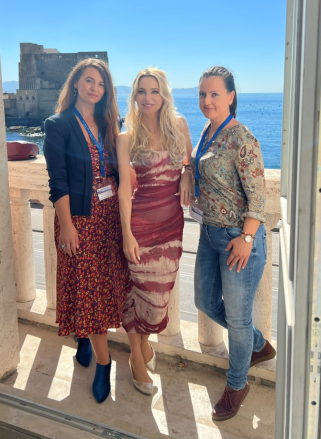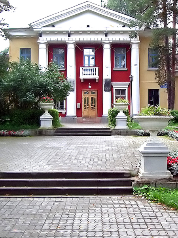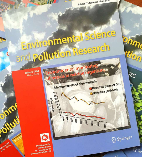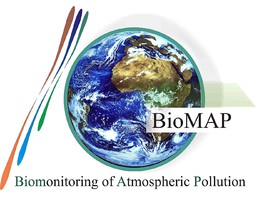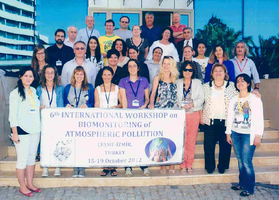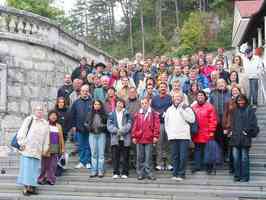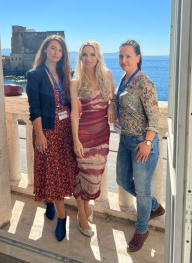
NEWS
Next Workshop: 2025
We are pleased to announce that BioMAP10
is in the planning stage.
After BioMAP9 took place in Naples, Italy
we are applying with the desire to have
BioMAP10
at the University of Sarajevo in
Bosnia-Herzegovina
2025
We keep you informed!
Next Workshop: 3-5 October 2022
The venue is placed at Centro Congressi Federico II
http://www.centrocongressi.unina.it
The 9th International Congress on Biomonitoring of Atmospheric Pollution (BIOMAP 9) will be held at University Federico II in Naples, Italy, from October 3rd to 5th 2022.
Atmospheric pollution is recognized as a crucial concern, also driven by the rapid growth of metropolitan areas, which worldwide is shaping terrestrial landscapes, where residential, urban and industrial activities merge into a complex patchwork of land uses. However, air-monitoring network are still poorly developed due to the high costs and application constraints. Moreover, the variability in air pollution patterns, underline the urgency to set up feasible methodologies targeted to extensive screening of air pollutants. In this respect, biomonitoring approach represents a useful tool to detect the presence in the air of inorganic and organic pollutants not routinely monitored by conventional devices.
The objective of 9-BIOMAP is to share the main results obtained in the development and application of air biomonitoring methods to assess the presence of pollutants in indoor and outdoor environments. In addition, this meeting addresses the possibility of proposing all the standardized biomonitoring methods as tools to be transposed into the environmental policies for assessing air quality. The 9-BIOMAP will provide an opportunity for sharing knowledges among researchers, policy makers and practitioners in environmental sciences.
Main topics:
Aerosols and particles
Air pollution and climate change
Air Pollution chemistry
Air pollution modelling
Air quality management
Biological Indicators
Economics of air pollution control
Environmental impact assessment
Exposure and health effects
Global and regional studies
Green technologies and techniques
Indoor air pollution
Industrial and travel emissions
Innovative technologies
Microplastics
Monitoring and measuring
Organic and inorganic pollutants
Policy and legislation
Risk assessment
Social economic issues
Stationary and mobile emissions
Strategic and project assessment
Congress language: ENGLISH
Next Workshop : 2-7 JULY 2018
BioMAP 8 in Dubna, Russia
Dubna is a town in Moscow Oblast, Russia. It has a status of naukograd (i.e. town of science), being home to the Joint Institute for Nuclear Research (JINR), an international nuclear physics research center and one of the largest scientific foundations in the country.
JINR is an international research center for nuclear sciences, with 5500 staff members, 1200 researchers including 1000 Ph.D's from eighteen member states
The Institute has seven laboratories, each with its own specialisation: theoretical physics, high energy physics (particle physics), heavy ion physics, condensed matter physics, nuclear reactions, neutron physics, and information technology. JINR has a division to study radiation and radiobiological research and other ad hoc experimental physics experiments.
BioMAP 8 will be organized by Prof. Dr. Marina Frontasyeva, Department of Neutron Activation Analysis and Applied Research, Frank Laboratory of Neutron Physics, Joint Institute for Nuclear Research (JINR), Dubna, Russia.
BioMAP 8 in Dubna
Local Organizing Committee
Marina V. Frontasyeva - Chairperson Otilia A. Culicov - Vice Chairperson Inga I. Zinicovscaia - Scientific Secretary Tatyana S. Donskova Konstantin N. Vergel Pavel S. Nekhoroshkov Olga A. Lashkova Atanas Vasilev Gergana Hristozova Julia Alexeenok Nikita Yushin
Editorial
Special Issue of Environmental Science and Pollution Research (ESPR)
Biomonitoring of atmospheric pollution: possibilities and future challenges
Almeida M, Wolterbeek HT, Markert B, Loppi S (2016), in press
This special issue of Environmental Science and Pollution Research highlights selected papers presented at the Seventh International Workshop of BioMAP (BioMAP7), which is focused on biomonitoring of atmospheric pollution, and which was held on June 14–19, 2015, in Lisbon, Portugal.
BioMAP7, in addition to the specific issues related to biomonitoring as a technique, specifically addressed the potential of biomonitoring in assessing human exposure to and effects of exposure to toxic substances: as it is, biomonitoring comprises interdisciplinary approaches, which need input from environmental, biological, chemico-analytical, data analytical and medical-epidemiological domains.
This special issue cannot fully reflect the diversity and creativity of the ideas and new insights that were shared at BioMAP7. However, as editors, we hope that this issue may prompt scientists from the diverse fields to participate in BioMAP workshops to come: the collected papers show and justify the strong position of the biomonitoring technique in worldwide studies on atmospheric pollution.

